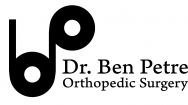Shoulder Instability
The ball and socket joint of the shoulder is inherently unstable. The socket part of the ball is nearly flat and so the joint resembles a golf ball sitting on top of a golf tee. It requires many ligaments, muscles and the labrum for the ball (humeral head) to stay centered in the socket (glenoid of the scapula). The labrum is like a chalk that one would stick under your tire to keep your car from rolling. The shoulder can become unstable for a number of reasons, the two most common are trauma/injury or global ligamentous laxity (loose joints). Many times with an injury or traumatic dislocation structures can be torn as the ball comes out of the socket. The ball does not need to come all the way out as in a shoulder dislocation, it can sublux (partially dislocate and then return to center). Shoulder instability can lead to weakness, an avoidance of certain positions or activities due to the feeling it may come out again, and pain.
Non-Surgical Treatment
Depending upon your age, the type of instability and the quality of your ligaments, tendons and labrum, non-surgical treatment is often the best choice for shoulder subluxations. This involves a period of gentle rest to allow for some healing followed by progressive motion and strengthening to get back to you pre-injury function. Some patients with global laxity may need a shoulder strengthening and maintenance program for years to ensure good shoulder health and preventing pain.
Surgical Treatment
Surgery for shoulder instability without a frank dislocation is reserved for chronic subluxations that fail to get better with physical therapy. This is a different approach then we take to patients whose shoulder comes all the way out of the joint (dislocation). For symptomatic instability that fails conservative treatment, surgery is typically arthroscopic tightening of the capsule, ligaments and rebuilding the labrum. This is done through multiple small incisions using all of your own tissue and small bone anchors to secure the sutures.
